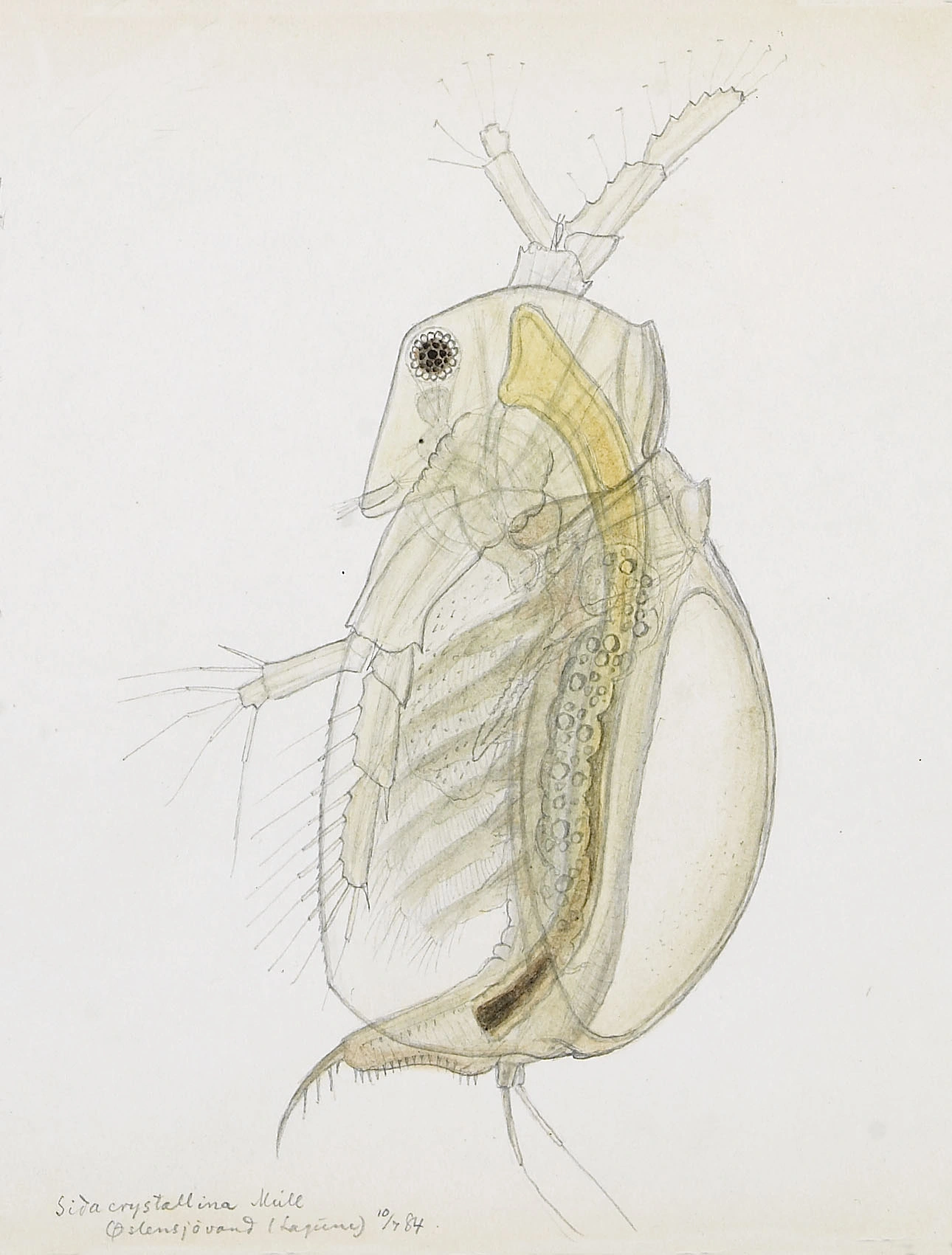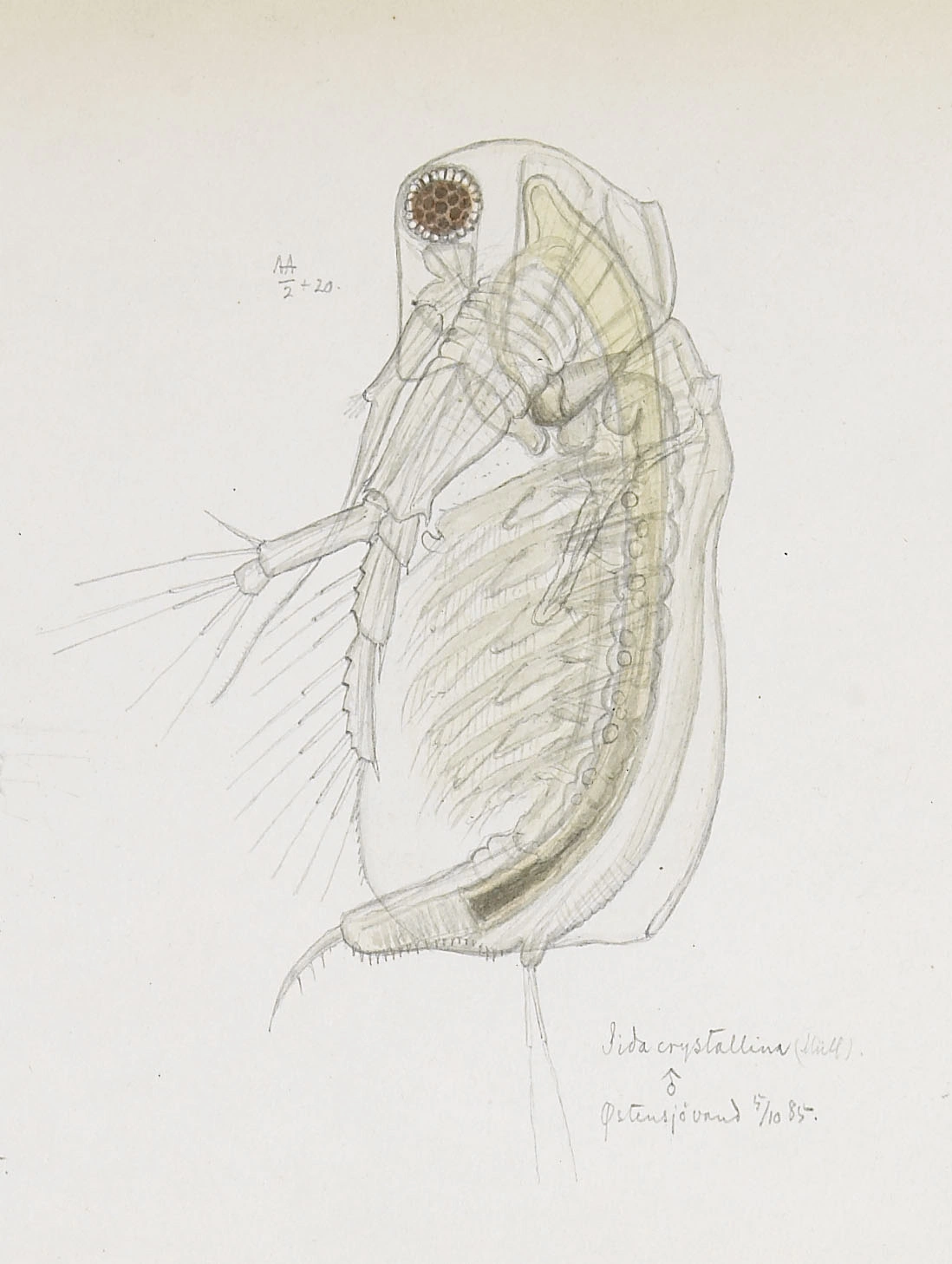Sida crystallina
Sida crystallina is the largest littoral cladoceran in Norwegian lakes and also one of the most common. It has a rectangular form and seem to be very tolerant toward differences in environmental conditions.
Key characteristics
Sida crystallina (female)
Sida crystallina (male)
Seen from the lateral side Sida crystallina has a rectangular form being about twice as long as broad. The first pair of antennae is small with a bundle of bristles fastened to the distal end. The second pair is short and powerful. The upper and longest branch consists of three segments while the lower branch consists of two segments. The compound eye is situated ventrally. Its postabdomen is visible outside the carapace and there are four teeth on the abdominal claw; the basal one is about half as long as the last three which are coarse and fastened with equal distance. S. crystallina is almost hyaline or with a light yellow colour.
Female: Length 1.8–4.0 mm
Male: Length 1.3–2.2 mm
Ecology and distribution
S. crystallina occurs in 41 % of the water bodies and is one of the most common species in the littoral zone. It’s distributed in all parts of the country from sea level and to 1400 m a.s.l. The frequency of localities which contains the species decreases both towards sea level and the alpine zone. It is less common in ponds and ditches than in lakes (>1da) and is slightly more common in acid water than in neutral/alkali water. It has a wide tolerance to electrolytes and is found in brackish water (957 mS/m). It is a littoral species and is common in all sorts of vegetation and is often found in high densities attached to the underside of the leaves of water plants.
| Vitenskapelig navn | < 4,5 | 4,5 - 4,9 | 5,0 - 5,4 | 5,5 - 5,9 | 6,0 - 6,4 | 6,5 - 7,0 | 7,0 - 7,4 | > 7,5 |
|---|---|---|---|---|---|---|---|---|
| 43 | 75,4 | 53 | 53 | 43,2 | 34,7 | 31,4 | 26,2 |
| Vitenskapelig navn | < 1,0 | 1,0 - 1,4 | 1,5 - 1,9 | 2,0 - 2,9 | 3,0 - 3,9 | 4,0 - 4,9 | 5,0 - 6,9 | 7,0 - 9,9 | > 10,0 |
|---|---|---|---|---|---|---|---|---|---|
| 32,4 | 53,8 | 50,8 | 48,8 | 41 | 42,6 | 39,4 | 32,4 | 30 |
| Vitenskapelig navn | < 0,01 | 0,01 - 0,09 | 0,1 - 0,9 | 1,0 - 9,9 | 10,0 - 99 | 100 - 999 | > 1000 |
|---|---|---|---|---|---|---|---|
| 16,7 | 18,4 | 36,8 | 43,9 | 44 | 49,2 | 63 |
| Vitenskapelig navn | < 100 | 100-299 | 300-499 | 500-699 | 700-999 | >1000 |
|---|---|---|---|---|---|---|
| 28,4 | 48 | 46,2 | 46,2 | 58,1 | 15,8 |

